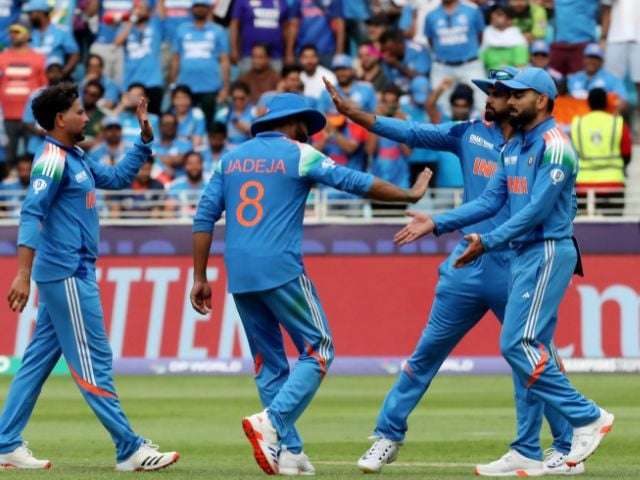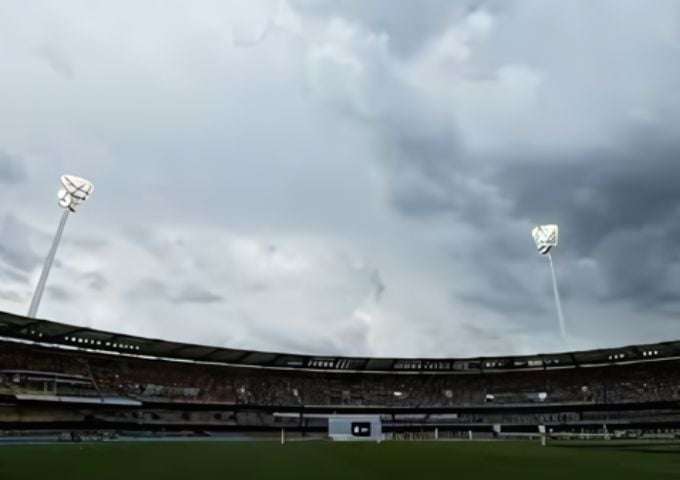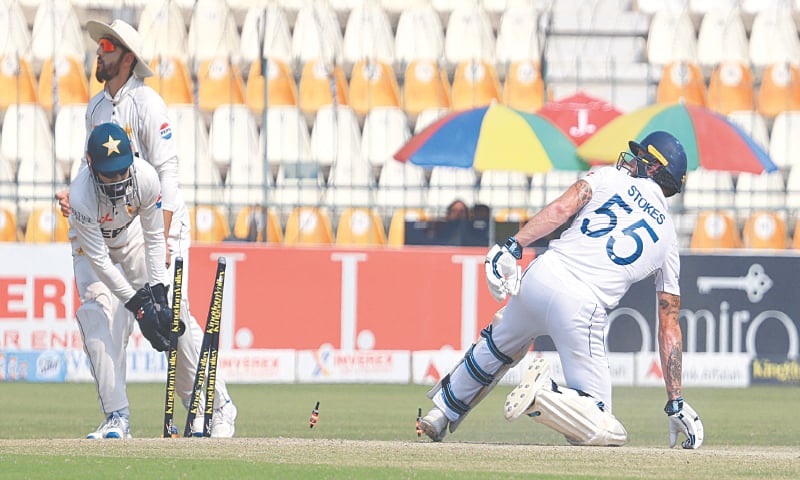Introduction: A Tense Encounter Between Pakistan and India
In the ongoing ICC Champions Trophy Group A encounter, Pakistan is battling hard against India at the Dubai International Cricket Stadium. As the game progresses, Pakistan finds themselves in a precarious situation, losing wickets at regular intervals, with their hopes resting on the lower-order batters to finish strong. With the match now deep into the final stages, Pakistan has reached 233/8 in 48.1 overs, and the Indian bowlers are tightening their grip on the game. As we approach the final overs, Pakistan will need a rapid acceleration to post a competitive total.
Early Struggles for Pakistan
Pakistan elected to bat first in this highly anticipated match, facing off against a dominant Indian side. Despite a few early setbacks, including the dismissals of Babar Azam and Imam-ul-Haq, Pakistan appeared to have steadied their innings. Saud Shakeel and Mohammad Rizwan formed a vital 104-run partnership, bringing some stability to the Pakistani innings after the fall of early wickets.
Key Partnerships and Key Dismissals
Babar Azam, who had looked fluent early on, was dismissed for 23 runs when he was caught behind off Hardik Pandya. Imam-ul-Haq was run out for 10, putting Pakistan in a vulnerable position at 47/2 in 9.2 overs. However, Rizwan and Shakeel’s partnership provided Pakistan with a solid foundation, taking the score to 116/2 after 27 overs.
India’s bowlers, particularly Hardik Pandya (6-0-18-1), kept things tight, not allowing Pakistan to get away. Pandya’s disciplined bowling ensured that Pakistan couldn’t accelerate their run rate. Mohammed Shami (5-0-18-0) and Harshit Rana (5-0-19-0) were also impressive with the ball, keeping the pressure on the batsmen.
The Middle Overs: A Sluggish Run Rate
Despite the solid foundation laid by Rizwan and Shakeel, Pakistan’s run rate remained sluggish, with the team finding it difficult to break the shackles imposed by India’s bowlers. Kuldeep Yadav (3-40) continued his impressive spell, picking up key wickets, including that of Naseem Shah (14). As wickets fell quickly, Pakistan struggled to maintain momentum.
Pakistan’s run rate after 40 overs was just 4.50, well below what would be considered competitive on a slow Dubai pitch. The fall of key wickets continued, and Pakistan’s lower order was exposed. Shakeel, who had played a brilliant knock of 62, was dismissed, followed soon by Mohammad Rizwan (46), leaving Pakistan at 179/5.
The Lower Order Faces Pressure
Pakistan’s lower order faced mounting pressure with the loss of key middle-order batsmen. Salman Agha (19 off 24) was caught by Ravindra Jadeja off Kuldeep Yadav, followed immediately by Shaheen Shah Afridi, who was dismissed for a golden duck, also falling to Yadav. With just two overs remaining, Pakistan’s tail had been exposed, and they were struggling to get to a competitive score.
Khushdil Shah (27*) remains at the crease, but with Pakistan losing wickets rapidly, the pressure is on the remaining batters to score quickly. The team will need a strong finish to get past the 240-run mark, which seems to be the minimum threshold for a competitive total on this sluggish surface.
Pakistan’s Attempt to Recover: The Final Overs
With only a handful of overs remaining, Pakistan’s primary focus is now on surviving and accelerating to push their score beyond 240. The current run rate is not enough to reach a competitive target, and Pakistan’s tailenders, including Naseem Shah and Shaheen Afridi, will need to contribute valuable runs.
Key Players in the Final Push
Khushdil Shah, who has been at the crease since the 40th over, will have a significant role to play in the final stages. Pakistan will be relying on his ability to rotate the strike and hit the boundaries in the final few overs. The tailenders, including Naseem Shah and Shaheen Afridi, have shown in the past that they can score some quick runs, and Pakistan will hope they can provide the finishing touch.
India’s Dominant Bowling Display
India’s bowlers, led by Kuldeep Yadav and Hardik Pandya, have been the standout performers so far in this match. Kuldeep Yadav’s 3-wicket haul has been crucial in breaking key partnerships and maintaining pressure on Pakistan. Hardik Pandya’s economical spell, where he took the key wicket of Babar Azam and kept things tight in the middle overs, has ensured that Pakistan has struggled to find any rhythm.
Ravindra Jadeja and Mohammad Shami have also kept Pakistan’s batsmen on their toes, with both spinners bowling tight lines and maintaining pressure. Kuldeep Yadav and Jadeja, in particular, have made it difficult for Pakistan to score freely, with both bowlers taking important wickets and providing the breakthrough when needed.
Pakistan’s Path Forward: Can They Recover?
As Pakistan enters the final few overs, the team faces an uphill battle to reach a competitive total. They have already lost eight wickets, and the remaining batters will need to find a way to accelerate their score without losing further wickets.
With Khushdil Shah still at the crease, Pakistan will look to him for a quick-fire finish. However, they will need some support from the tailenders to get them past the 240-run mark and possibly beyond. The match has been a test of character for Pakistan’s lower order, and they will need to step up to give their bowlers something to defend.
The Final Stages: Will Pakistan Cross 240?
As the match moves into the final overs, Pakistan’s primary aim will be to reach a total that is competitive, ideally in the 250-260 range. With eight wickets down, Pakistan will need quick runs from the tailenders to boost their total. India’s bowlers, on the other hand, will be aiming to close out the innings and prevent Pakistan from getting any further.
The Dubai pitch, which has slowed considerably, will offer assistance to the spinners, making it even more challenging for Pakistan’s lower order. If Pakistan can reach a total of 240 or more, they will have a chance to put pressure on India. However, the Indian bowling attack has been disciplined and might prove too strong for the Pakistani tail.
Conclusion: Pakistan’s Struggle Continues
At the time of writing, Pakistan is 240/8 with just two overs left. While the top order did show promise, the failure of the middle and lower order to capitalize on the platform provided by Shakeel and Rizwan has put Pakistan in a difficult position. India’s bowlers have been exceptional in their containment and wicket-taking, and they will look to finish off Pakistan’s innings with minimal further damage.
FAQs
- Why is Pakistan struggling against India in this match? Pakistan has lost wickets at regular intervals, including key players like Babar Azam and Saud Shakeel, and has been unable to accelerate their run rate.
- Who are the standout bowlers for India in this match? Kuldeep Yadav and Hardik Pandya have been the standout performers for India, taking crucial wickets and maintaining tight lines throughout.
- Can Pakistan still reach a competitive total? With the lower order exposed, Pakistan will need a strong finish from Khushdil Shah and the tailenders to reach a total over 240, which could be competitive on this surface.
- How has the pitch at Dubai affected the match? The pitch at Dubai has slowed down considerably, making it difficult for the batsmen to score freely, particularly in the later stages of the innings.
- What is the current run rate for Pakistan? Pakistan’s current run rate is 4.50, which is below par for this stage of the innings.
ALSO READ
https://flarenews.pk/2025/02/23/rohit-sharmas-absence-and-shubman-gills-leadership-in-pak-vs-ind/



